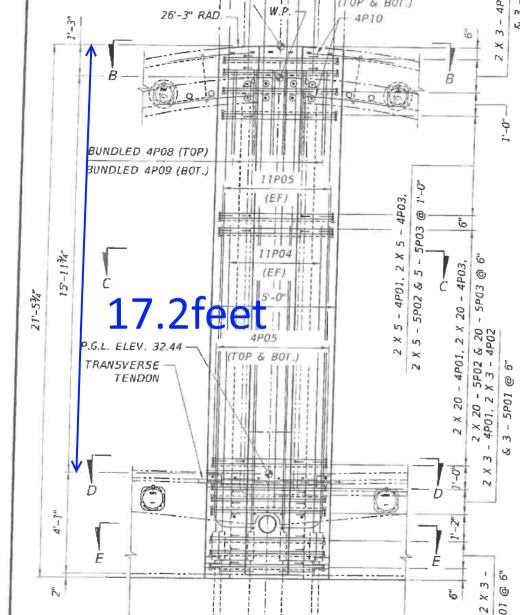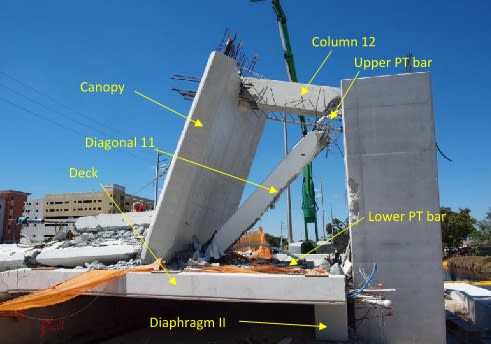Thank you, Tom, Charlie, and Mike. I am having a bit of a problem with my first concept of this failure.
On March 15 of 2018 the first thought was the truss lost a heel joint at the north end. I am still of that opinion.
The actual damage sequence is a bit more elusive to me. From the photo by Tomfh, west side, and the one by MikeW7, east side, the top joint of 12 to the canopy appears basically intact. And it appears from measurements (scaling display and counting pixels - wish I could do that) of the north face of 12 that the face is not blown away at the bottom, as I would expect if the joint 11/12/deck failed and moved north a foot maybe.
Is the geometry such that it 'protected' 12 throughout this bumpy ride?
The splits and separations in the lower part of 11 and across the top of the fillet zone between 11 and 12 are a clue to the condition of 11 just before the collapse.
If the cold joint is moving, that would induce angle changes in 10/11/canopy and 11/deck with subsequent stresses from bending.
Did member 11 simply explode just above the fillet (or did both 11 and the fillet to 12 explode), with the resulting shortening of 11 allowing node 10/11 to begin dropping freely? With the damage at the canopy/12 joint appearing minimal (compared), the dropping of 11/12 pulled the top of 12 to the south, prying it from the bottom joint casting, preserving the north face? There is a lot of concrete missing from the bottom of 11 and the formed joint of 11/12/deck.
If 11 "exploded", that would have been pretty sudden. I am just a bit surprised that the north face of 12 is pretty much intact.
EDIT ADD: With the concrete having departed the lower portion of 11 only the reinforcing remained, limiting any further influence of 11 primarily to tension thru what anchorage of reinforcing remained. Thus 11 was able to pull some of the remains back to the south face of the pylon.


